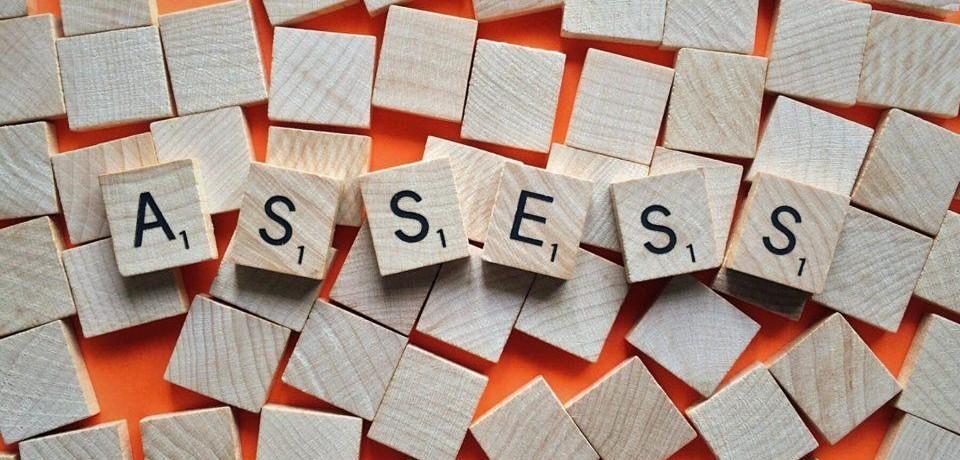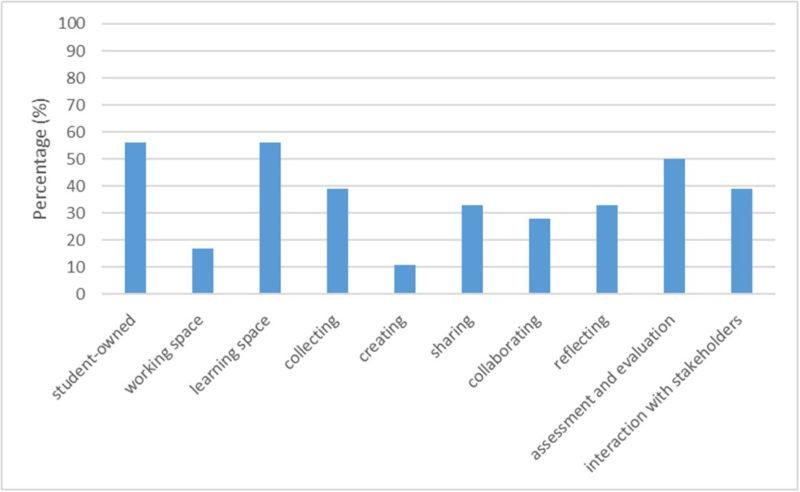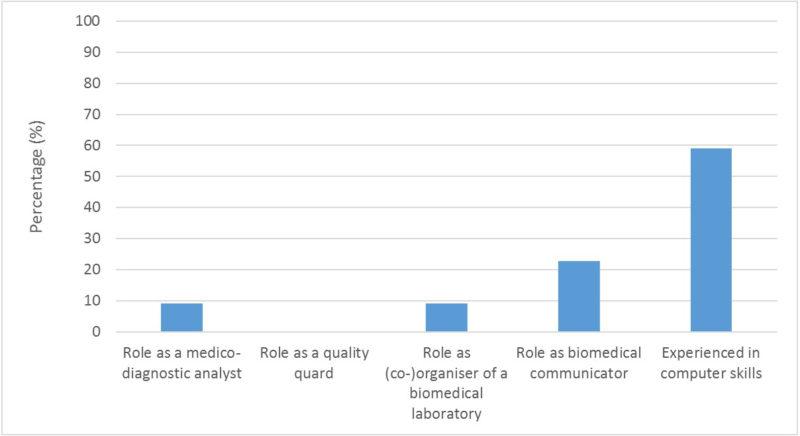
Karolien Devaere, Ellen Martens & Karolien Van den Bergh
The landscape of higher education in Europe has been changing during the last decades. A combination of different changes resulted in that higher education is no longer just a place to transfer knowledge but also a challenging – and triggering – environment where students become critical and conscious cosmopolitans. An ePortfolio is a digital platform/tool able to support this evolution.
Against this background, an EEP supported study was performed in the professional bachelor program ‘Bachelor in Biomedical Laboratory Technology’ (BLT) from University colleges Leuven-Limburg, Flanders. The PBA BLT program has not implemented an ePortfolio yet, but aims to introduce it (i) to make some learning outcomes clearly visible in the curriculum and (ii) to have a communication platform for internship follow up and evaluation. This study by students without experience using an ePortfolio gives added value to the project since students rather estimate their expectations of an ePortfolio than share their real experiences.
Theoretical framework
Tendencies of higher education in Flanders
The landscape of higher education in Europe has been changing during the last decades. Changes are characterized by digitalization, flexibility, networking and decentralization all due to globalization. Consequently, transnational networks arise wherein processes take place irrespective of distances or borders (van den Berg 2003; Verhoeven, Kelchtermans, & Michielsen 2004). The endless possibilities of the World Wide Web and wireless communication contributed to these expanding networks (Claassen & Dehandschutter 2008).
An important impulse was the Lisbon strategy, introduced in March 2000 by the European Council (Fannes 2013). The aim was to make the EU “the most competitive and dynamic knowledge-based economy in the world capable of sustainable economic growth with more and better jobs and greater social cohesion”(Verhoeven et al. 2004). Next, the Flemish government signed the Bologna Declaration and restructured the higher education area voluntarily. For instance, the bachelor-master structure was introduced to make our higher education system more compliant. In addition, there became an enhanced international uniformity, transparency and visibility (Depreeuw 2006) by implementing a European Qualification Framework (EQF). Flanders developed a Flemish Qualification Framework, based on the EQF, recognizing qualifications on eight levels. Each level is based on five elements: knowledge, skills, context, autonomy and responsibility (Vlaams ministerie van onderwijs en vorming n.d.). A combination of all those elements resulted in that higher education colleges are no longer just a place to transfer knowledge but a triggering environment where students become critical and conscious cosmopolitans.
Another tendency besides globalization that influences our higher education area is Neo-liberalism. Neo-liberalism starts with ‘market thinking’ (Ball 1998), to guarantee prosperity for the whole society. Our higher education system supports this tendency by educating students to responsible and critical citizens, needed in this market thinking. Citizens/students need to learn to make substantiated choices.
University Colleges Leuven-Limburg (UC Leuven-Limburg) have translated all of these demands from the government (level 6) and society (21st century competences) in a mission, vision and strategic priorities. In the moving minds project ‘Bachelor-Proof’ this was realized by developing a bachelorproof-profile for all graduated students (UC Leuven-Limburg 2017).
The use of an ePortfolio
An ePortfolio is a tool that can help instructors to teach students ‘the competences of the 21st century’. Students have the opportunity to get involved in their own learning process and career development, as stated in the definition given by EEP. In earlier years, an ePortfolio was a tool mainly used by teacher education programs. Nowadays, other educational programs show increasing interest in ePortfolio. Since 2015–2016, there have been 19 bachelor’s and master’s degree programs within the Association KU Leuven that started a pilot in ‘My Portfolio’, with KU Leuven (13) and UC Leuven-Limburg (3) being the most frequent users. Only two of them are teacher education programs (Associatie KU Leuven 2017). The other departments involved are related to medicine, economy, STEM education, etc.
Methodology
Setting
The study was performed in the educational program ‘Bachelor in Biomedical laboratory technology (BLT) from UC Leuven-Limburg. This educational program belongs to the Group Health and Welfare and is located at two campuses: Diepenbeek (Limburg) and Gasthuisberg (Leuven) located near the Leuven University hospitals. The team of instructors consists of a combination of professional bachelors, masters and/or masters with Ph. D. degree. The educational program BLT has level six of the Flemish Qualification Framework and has a duration of three academic years. The first year is a common year for all the students. From the second year on, students choose between ‘Pharmaceutical and biological laboratory technology’ (FBT) that is more biomedical research related, or ‘Medical laboratory technology’ (MLT) that is more related to the clinical field.
There is growing interest to work with an ePortfolio in STEM educational professional bachelor programs (e.g. the use of ePortfolio). For this reason, the BLT study program is participating in the EEP project, though an ePortfolio has not been implemented in the curriculum yet. Particularly, the BLT program aims to integrate an ePortfolio with the introduction of a new curriculum in 2018-2019. A former merger between Leuven University College (KHLeuven) and Limburg University College (KHLim) demands harmonization of both curricula. Second, an ePortfolio is convenient to make some learning outcomes clearly visible in the curriculum as stated by the ‘Domain specific learning outcomes’ (DLRs). Recently, all BLT education institutions in Flanders worked together to describe ‘Domain specific learning outcomes’. These are program specific learning outcomes described at three levels. Every graduated BLT student needs to achieve level three of those DLRs. Generic competences like organizational skills (DLR 1), communication skills (DLR 8), critical reflecting (DLR 7) and teamwork are part of these DLRs (DLR 9). The use of an ePortfolio contributes to make intercourse and interdisciplinary generic competences more transparent and visible in the BLT study program.
Third, an ePortfolio is a suitable interactive communication and reporting tool for internship mentoring.
Subjects
For this EEP project study, 52 students from the third year medical laboratory technology (MLT) of campus Gasthuisberg, Leuven, of UC Leuven-Limburg were invited to participate a questionnaire by email. The email described shortly the expectations of the study and contained a link to the online questionnaire (LimeSurvey). Students were informed that their answers would be treated anonymously. They received a reminder once. Thirty-five students started but did not all finalize the survey. Eighteen students filled in the questionnaire completely. All interrogated students had experience with internship. The analysis of the completed results are further outlined either by frequency diagrams or by descriptive analysis.
Questionnaire
The online survey performed was based on the questionnaire received from the EEP project team. The definition of an ePortfolio was firstly given and a few questions were adjusted, as the interrogated MLT students were inexperienced with a portfolio.
ePortfolios are student-owned digital working and learning spaces for collecting, creating, sharing, collaborating, reflecting learning and competences, as well as storing assessment and evaluation. They are platforms for students to follow and be engaged in their personal and career development, and actively interact with learning communities and different stakeholders of the learning process. (Kunnari & Laurikainen 2017, 7.)
Table 1. Overview of the adapted questions posed to MLT students of UC Leuven-Limburg. Omitted questions are indicated in italics.
1. Students’ experiences and perspectives of ePortfolios
|
2. Digital competences
|
3. Benefits and challenges of using ePortfolios
|
4. Supports required
|
5. UCLL related questions
|
Results
This chapter gives an overview of the results from the questionnaire structured in four categories. For each category, the (adopted) questions posed were indicated. Data are summarized using descriptive statistics including bar charts. In some cases, the responses are only listed because there were too little responses to show them in a bar chart.
Students’ experiences and perspectives of ePortfolios
A. The first question was: ‘Read the definition of ePortfolios. Which elements do you find important/interesting?’
Students pointed out which elements they argued important/interesting. According to figure 2, students outlined that ePortfolios must be a student-owned learning space suitable for assessment and evaluation, collecting documents and interaction with the stakeholders (score higher than 35 %).

B. The next question in this category was: ‘Do you think an ePortfolio is a good mode of assessment? Motivate your answer‘.
By asking to motivate their answer, students had to reflect and they were not able to simply answer ‘yes’ or ‘no’. Most students argue that an ePortfolio is a representative method of assessment (83 % of the students), though some students (17 %) fear the more impersonal manner of evaluation.
Digital competences
A. Because this category of questions asked about the digital competences, the word ‘competences’ was added to the question. This leads to: ‘What skills/competences do you need to create an ePortfolio?’
The students’ answers were categorized according to the Flemish learning outcomes and DLRs. Figure 3 shows that being experienced in computer skills was the main answer followed by having excellent written communication skills and social skills, organizational skills to work and collect items on a structured manner and excellent biomedical knowledge.

B. As a second question in this questionnaire within this category, students had to rate their own digital competences/technical skills as given in the originally questionnaire: ‘How do you rate your own digital competence/technical skills? [Digital skills/competences]’
The students answered this question in a Gaussian way. It is possible that the students did not understand this question well. This will be taken into account in the conclusions and discussion part.
Benefits and challenges of using ePortfolios
In this category, both questions were taken from the original questionnaire.
A. The first question was: ‘What are the benefits of using an ePortfolio?‘
Several benefits were mentioned, e.g. centralized storage of all relevant information (22 %), extensive communication network (22 %), easy platform to follow up personal progression and career development (17 %), easily accessible (independent on time and space) to all stakeholders (17 %), transparent assessment system comparable to other university colleges (5 %), stimulating students in autonomous behavior and critical thinking and reflecting (which corresponds to the students’ competences of the 21st century) (5 %).
B. Some explanation was added to the second question, resulting in: ‘What are the challenges in using an ePortfolio? Which elements do you find important? What would motivate you to use an ePortfolio?‘
Students noted that challenges are related to respect for privacy (17 %), being honest about yourself reflecting reality (11 %), consistency in use (17 %), keeping the ePortfolio up-to-date requires diligence and punctuality (11 %), accurate feedback is required (11 %), representative for the individual student (11 %), rules of the system should be respected (11 %), everybody should participate in an active manner (11 %). Some students stress that a final face-to-face conversation with their tutor about their ePortfolio is indispensable to learn about the students’ whole profile and to give immediate feedback to the student (11 %).
Supports required
A. ‘What supports (pedagogical, technological, organizational, …) do you require to create an ePortfolio?’, a few examples were added to clarify this question for the respondents.
Fifty percent of the students answered that technical support is required to complete an ePortfolio. Twenty-eight percent of the respondents indicated that organizational support is necessary and 17 percent of the students responded that pedagogical support is important to create an ePortfolio. A manual with clear information on organization, explanation, FAQ, is desirable.
B. The second question in this category in the questionnaire was: ‘What type of teachers’ actions stimulate your engagement in ePortfolio process?’
Students responded that the teachers’ role is an active, enthusiastic, positive and stimulating attitude. He/she has to give clear feedback on a regular base, inform, explain with examples, keep it up to date, be easily available, be involved, etc.
C. The last question in this category was adapted to: ‘Which elements of the digital environment, besides easy access, could be motivating in creating ePortfolio? Give a minimum of two elements.’
Students pointed out the ease of use of the platform. Everything is clearly explained (transparent). The platform is thereby useful for data collection, traceability, reproducibility and communication with tutor and students. In addition, the platform stimulates uniformity, has a clear structure and guarantees privacy. A back up is also available and it is easily accessible on several devices.
BLT-specific questions
A. An ePortfolio is often used to communicate with different stakeholders in internship follow-up. It is fruitful to take into account the opinion of students having their first internship experience. The first question is: ‘Do you think a digital platform (ePortfolio) for communication between different stakeholders of the internship would be useful? Motivate your answer.’ All students agreed that a digital platform would be useful.
B. In PBA BLT, an ePortfolio will also be applied to visualize generic competences. Therefore, the second question is: ‘Theoretical knowledge and labs skills are visible and evaluated throughout the curriculum. Besides that, there is also a focus on a number of generic competences (e.g. critical reflection, communication skills, teamwork, …). Do you think an ePortfolio would be a useful tool to make the generic competences more visible?‘
Most students agree but argue that they have more competences than the ones being assessed (22 %). At least one feedback conversation is necessary. The overall competences of the student can only be estimated in real life.
Conclusion and discussion
The PBA Biomedical laboratory technology is a STEM related study program. Hitherto, little focus was laid on the implementation of an ePortfolio in scientific curricula. An ePortfolio was rather associated with teacher education programs in Flanders. This study supported by EEP, consciously focused on BLT students without experience using an ePortfolio. This approach gives added value to the project since students rather estimate their expectations of an ePortfolio than share their real experiences (good and/or bad). Fortunately, their expectations of competences corresponded very well with our DLRs, such as computer skills, communication and social skills, organizational skills and clinical knowledge. Sometimes they could not give an in-depth answer due to lack of experience and recognition but in most cases they gave honest answers that were unbiased by the use of an ePortfolio. Though they argue that the implementation of an ePortfolio enforces the curriculum, not all individual competences can be visualized and estimated with the platform. Therefore, an additional face-to-face feedback conversion is indispensable for the Flemish students and should be organized complementary to the online ePortfolio tool.

This article was produced in the Erasmus+ (KA2 action) funded project “Empowering Eportfolio Process (EEP)”. The beneficiary in the project is Häme University of Applied Sciences (FI) and the partners are VIA University College (DK), Katholieke Universiteit KU Leuven (BE), University College Leuven-Limburg (BE), Polytechnic Institute of Setúbal (PT) and Marino Institute of Education (IE). The project was implementated during 1.9.2016–30.11.2018.
Authors
Karolien Devaere is a teacher in microbiology (educational programme Biomedical laboratory technology) and a member of the permanent course commission. She is Biomedical laboratory technician and also has a degree in Educational sciences. She is now introducing ePortfolios in the new curriculum.
Ellen Martens has a PhD in Medical Sciences. She works as a Staff professional in education and quality management. She has expertise in blended learning, digital learning environments and assessment in higher education. She has a researcher background.
Karolien Van den Bergh has a PhD in Bioscience Engineering. She is a lecturer at University Colleges Leuven – Limburg (Flanders, Belgium) in Cell biology, Molecular biology and Immunology in the Professional Bachelor program of Biomedical Laboratory Technology and Chemistry. She is an internship supervisor and is a member of the permanent education committee.
References
Associatie KU Leuven. (2017). Piloot – Toledo – My Portfolio – Klankbordgroep. Association KU Leuven intranet.
Ball, S. (1998). Big policies/small world: An introduction to international perspectives in education policy. Comparative Education, 34, 119–130.
Claassen, A., & Dehandschutter, A. (2008). PSAI: Een instrument voor interne kwaliteitszorg in het hoger onderwijs. Invoering en effecten. Thesis. Faculty of Psychology and Educational Sciences. KU Leuven.
Depreeuw, E. (2006). Meerwaarde en gevolgen van flexibilisering van het Vlaamse hoger onderwijs. Retrieved 4 January 2018 from https://lirias.kuleuven.be/bitstream/123456789/408885/1/STB+VLOR+Eric+Depreeuw.doc
Fannes, P., Vranckx, B., Simon, F., & Depaepe, M. (2013). Een kwarteeuw onderwijs in eigen beheer. Leuven: Acco.
Kunnari, I. & Laurikainen, M. (eds.) (2017). Collection of Engaging Practices in ePortfolio Process – Publication of the Empowering Eportfolio Process project. Retrieved 4 January from https://goo.gl/ByVHBX
UC Leuven-Limburg. (2017). Moving minds project: Bachelor- Proof@UCLL. Pilootversie februari 2017. UC Leuven-Limburg intranet.
van den Berg, I. (2003). Peer assessment in universitair onderwijs : Een onderzoek naar bruikbare ontwerpen. Thesis. Instituut voor Lerarenopleiding, Onderwijsontwikkeling en Studievaardigheden. Utrecht University.
Verhoeven, J., Kelchtermans, G., & Michielsen, K. (2004). Internationale sturing in het beleid rond hoger onderwijs. In G. Kelchtermans (ed.) De stuurbaarheid van onderwijs (39–55). Leuven, Belgium: University Press.
Vlaams ministerie van onderwijs en vorming. (n.d.). De Vlaamse kwalificatie structuur. Retrieved from http://www.vlaamsekwalificatiestructuur.be/wat-is-vks/kwalificatieniveaus





